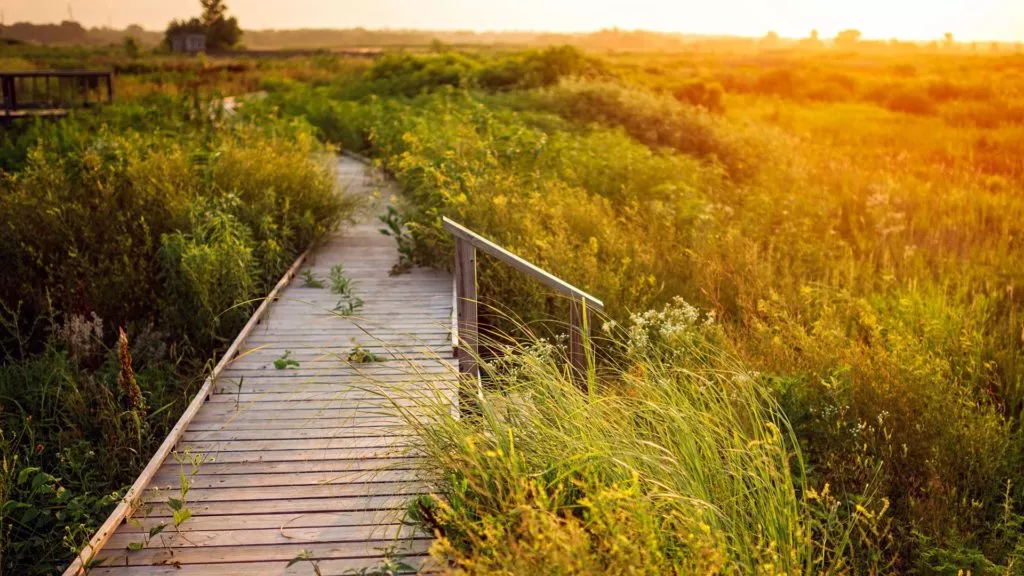
Photo courtesy of Baker University
By Elaine Giessel, Sierra Club Kansas Chapter Chair
The Supreme Court’s 2022-2023 term opened last month with a case which centers on the definition of “waters of the United States” which are protected by the Clean Water Act. Supreme Court Opens Its New Term With a Major Clean Water Case | Sierra Club
Since protecting our water resources is a high priority for the Kansas Sierra Club, it is important to understand how this critical legal decision might impact our streams, wetlands and drinking water sources.
A Supreme Court decision which narrows the jurisdiction of the Clean Water Act, as attempted by the Trump Administration’s EPA, would eliminate protection for the many miles of ephemeral and seasonal streams in western Kansas. Many of these tributaries are already at risk, drying up as depletion of the Ogallala drops local water tables. Climate change models predict that the situation is likely to worsen.
Agriculture, groundwater withdrawal, and urban development are responsible for the loss of almost half of Kansas wetlands over the last 200 years. Other nearby states, including Missouri, Ohio, Indiana, Illinois, and Iowa, have lost more than 85% of their wetlands. We cannot afford to lose more wetland areas, which provide wildlife habitat, critical ecosystem functions, and recharge of groundwater. Loss of Wetlands in the Southwestern United States|usgs.gov
It is estimated that almost half of the nation’s remaining wetlands could also lose protected status, including isolated interior wetlands not already under protection as conservation areas. Kansas has about 435,000 acres of wetlands now, which include sandhill pools along the Arkansas River, playa lakes/prairie potholes in western Kansas, isolated wetlands like Cheyenne Bottoms and Quivira National Wildlife Refuge in central Kansas, and marshes in eastern Kansas. Almost all have been altered from their natural state but are still important to local wildlife and to migrating waterfowl and shorebirds, which depend on the few remaining wetlands in the Central Flyway
We’ve been there before. Two decades ago, the Kansas Sierra Club sued EPA over attempts by the Kansas Legislature to bypass the Clean Water Act requirements. We challenged their efforts to lower Kansas water quality standards without scientific assessments and to reclassify protected streams according to arbitrary flow levels.
If these Kansas politicians had prevailed, they would have removed about 40% of western tributaries and headwater streams in the state from federal protection. But the Kansas Sierra Club was watching. We sued EPA for failure to ensure that Kansas was properly enforcing the law and we won. Even now, the fight to protect our nation’s waterways and wetlands is far from over.
It has been 50 years since the United States Congress, with the intent to provide swimmable, fishable and drinkable waters for all, passed the Clean Water Act to restore and maintain the chemical, physical and biological integrity of the Nation's waters (33 U.S.C. 1251). One of our bedrock environmental laws, the Act provides the structure for regulating point discharges of pollutants into the legally recognized waterways of the United States and for regulating quality standards for surface waters, including those impacted by non-point source pollutants. Summary of the Clean Water Act | US EPA
This anniversary is a good opportunity to recognize the accomplishments of the Clean Water Act and to reaffirm its role in protecting the environment and public health of all Americans. However, water quality and quantity remain major concerns for people and wildlife habitat nationwide. The growing climate crisis and a legal decision, which could result in less protection for many headwater streams and wetlands, will pose new challenges for the next 50 years.